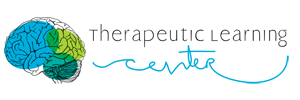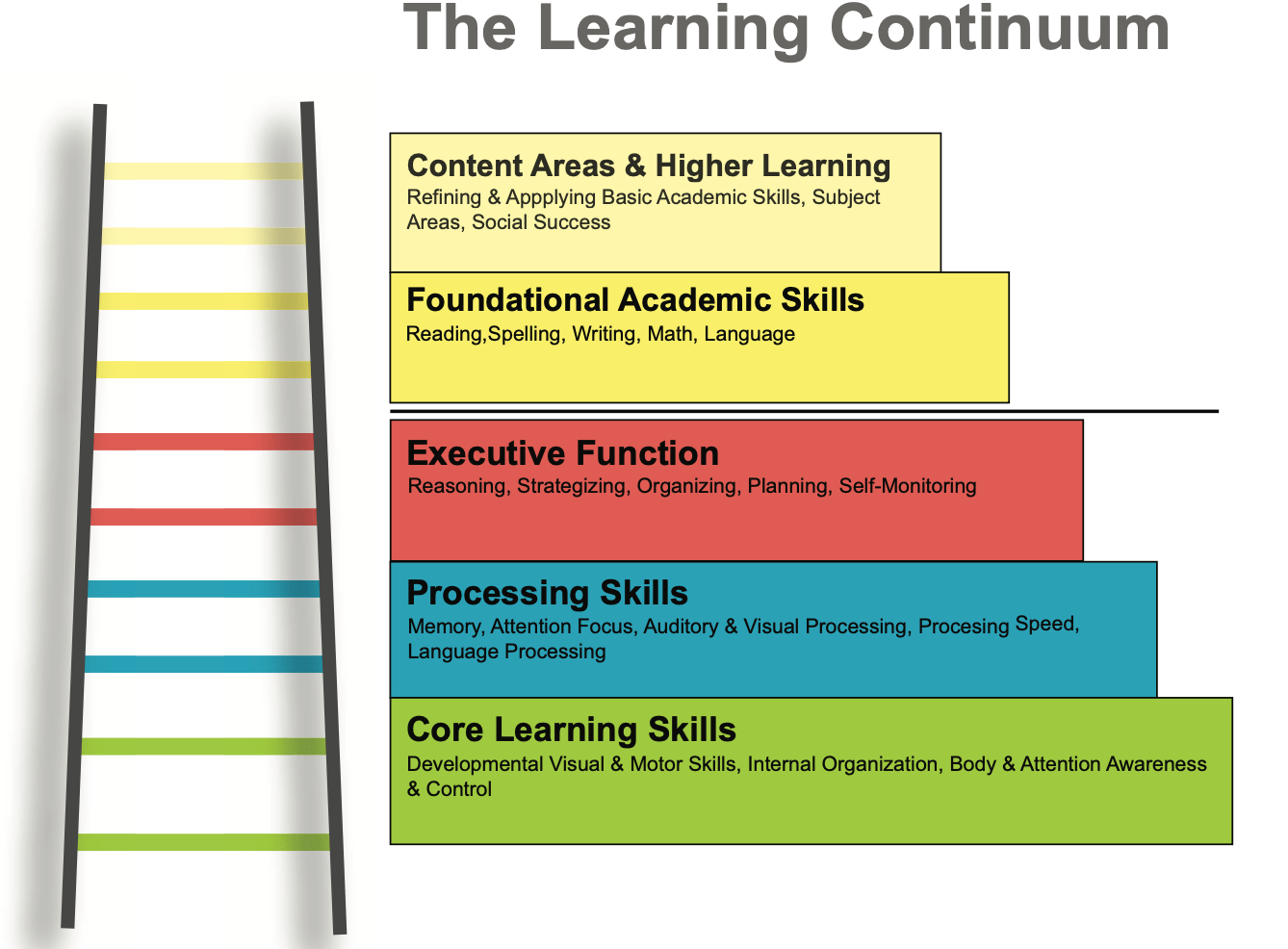The Therapeutic Learning Center (TLC) provides one-on-one training in specific areas of cognitive processing skills and in building synchrony in the use of these skills for higher level learning and reasoning in a classroom setting.

Auditory Stimulation Training (AST-R/S/C) for Reading, Spelling, and Comprehension
Some of these include, Poor auditory working memory skills… difficulty with certain aspects of visual processing skills… and may appear to be distracted or off task at times because he is not able to follow instructions or fully process the information (due to below average auditory working memory and/or processing speed).
These challenges can be permanently improved or corrected through cognitive, or learning skills, training.
Students scoring or functioning below their potential do not have to be stuck there. The brain can be retrained to process information and learn more quickly, easily, and independently as a result of learning skills training.
Auditory Processing
TLC provides training in skill areas of auditory processing including: Auditory Discrimination, Auditory Figure Ground, Auditory Sequencing, Auditory Attention, Auditory Memory, Auditory Closure, Spatial Relation and in the development of synchrony between auditory and visual processing.
Therapy in the development of auditory processing skills should include auditory stimulation and training using a combination of sound therapies with audio-vocal training using the human voice. Such training should include such things as both student and instructor should using either a headset or standing microphone to speak into while doing exercises using methodologies similar to echo-tapping where kinesthetic modalities are used to repeat auditory input and use an inner voice to complete multiple complex thinking tasks.
Combined exercises increase auditory working memory, inner voice and language skills, word associations and higher-level reasoning skills should be interspersed throughout the training.
When both the student and instructor’s amplified voices can be heard through the student’s headphones, the student is able to get a clear message with listening and facilitates attention and self-monitoring of his own articulation, intonation (also associated with making meaning and creating inferences), content and communication.
Auditory processing skills include the ability to sort-out extraneous auditory and visual information, sequence input, and hold onto what is important while something is done with that information in the form of critical thinking and learning. Exercises developing and inner voice, processing speed and auditory working memory should be done in conjunction with reading, spelling and comprehension contexts for more efficient training for academic learning.
Sound therapy should be paired with the auditory stimulation and audio-vocal training to increase the brain’s ability to pay attention to a wide range of frequencies in sound. The lower frequencies in sound are especially important for coordination, movement, rhythm, attention and organization. Mid-range frequencies are especially important for hearing, reproducing and processing speech sounds. High frequency sounds are critical for attention, thinking and learning. The high frequencies in sound also carry the detail information that makes it possible to discriminate between and process more efficiently similar speech sounds and words, tone of voice and therefore the speed in which information can be taken in and organized in such ways necessary for understanding and learning.
Once the brain is processing a greater range of frequencies in sound, the listener will have better energy and better input with which to attend, think and learn. Audio-vocal training should be used in a way that further develops the person’s voice to acquire the wide range of frequencies so that his brain is learning what to hear or pay attention to. When the voice is richer and contains a wider range of frequencies, it becomes the ongoing stimulus for the auditory system.
This has many positive outcomes and direct effects:
Speaking provides energy to the brain for thinking
Reading, writing and comprehension improve
Increased auditory working memory
Vocabulary development in both speaking and reading improves
Self-monitoring for speaking and reading accuracy
Social and communication skills improve
Attention and focus
Ability to follow directions and fully process information in classroom situations and in life
Better input, working memory and complex thinking in an academic environment
Finally, connections between auditory and visual processing should be made enabling synchrony to be developed for improved efficiency in receptive and expressive academic tasks such as reading, writing and classroom instruction.
Visual Processing
TLC provides training in skill areas of visual processing including: Visual Discrimination, Visual Figure Ground, Visual Sequencing, Visual Motor Processing, Visual Memory, Visual Closure, Spatial Relationships and Simultaneous Visual Processing.
Training should include identifying detailed patterns, shapes and symbols in black/white and in color with and without distracting elements. These should be used in specific sequencing and location exercises under timed conditions using a metronome to increase the pressure to persist through the repetitiveness and speed necessary for development of automaticity and visual memory. Training should also include tasks involving discrimination and speed. Such tasks may involve identifying similar size and shape insects or other detailed images in amongst extraneous information/designs/images from which to discriminate and identify on a speed- timer and on the beat of a metronome.
Simultaneously, cognitive material should be presented as skills are developed to further develop higher level thinking skills related to finding connections between what one sees, hears and thinks while processing visual information. Time-delay while loading cognitive tasks should be used to develop visual working memory. The metronome should be used while loading cognitive information and tasks and therefore pushing speed and automaticity to the limit constantly, pulling back and pushing again to his capacity until his capacity for complex visual processing skills is increased for more efficient learning and attention in classroom situations.
Training in visual processing skills should also involve exercises using the vestibular system, which develops lower brain stem internal body organization and timing. Exercises related to the integration of primitive reflexes are just one example of this type of integration. Since visual processing is so tightly tied to spatial relations and movement in space, these activities should contain movement and timing exercises including bilateral movement, rhythm/timing, eye tracking with objects in space and both two- and three-dimensional objects and all while providing cognitive tasks in order to connect visual processing to higher level activities of the brain.
Schedule a Consultation Now
The Learning Skills Continuum approach ensures that we can identify and treat all of the underlying skills that are at the root of learning and attention challenges.
Our vision is to create permanent changes in the lives of students who have experienced failure or frustration transforming their experience to confidence and independence.
Whether it’s specialized tutoring, educational therapy, cognitive enhancement therapy, alternative schooling or support for homeschooling families, we are committed to providing high quality, tailored solutions.
Our vision is to create permanent changes in the lives of students who have experienced failure or frustration transforming their experience to confidence and independence.


